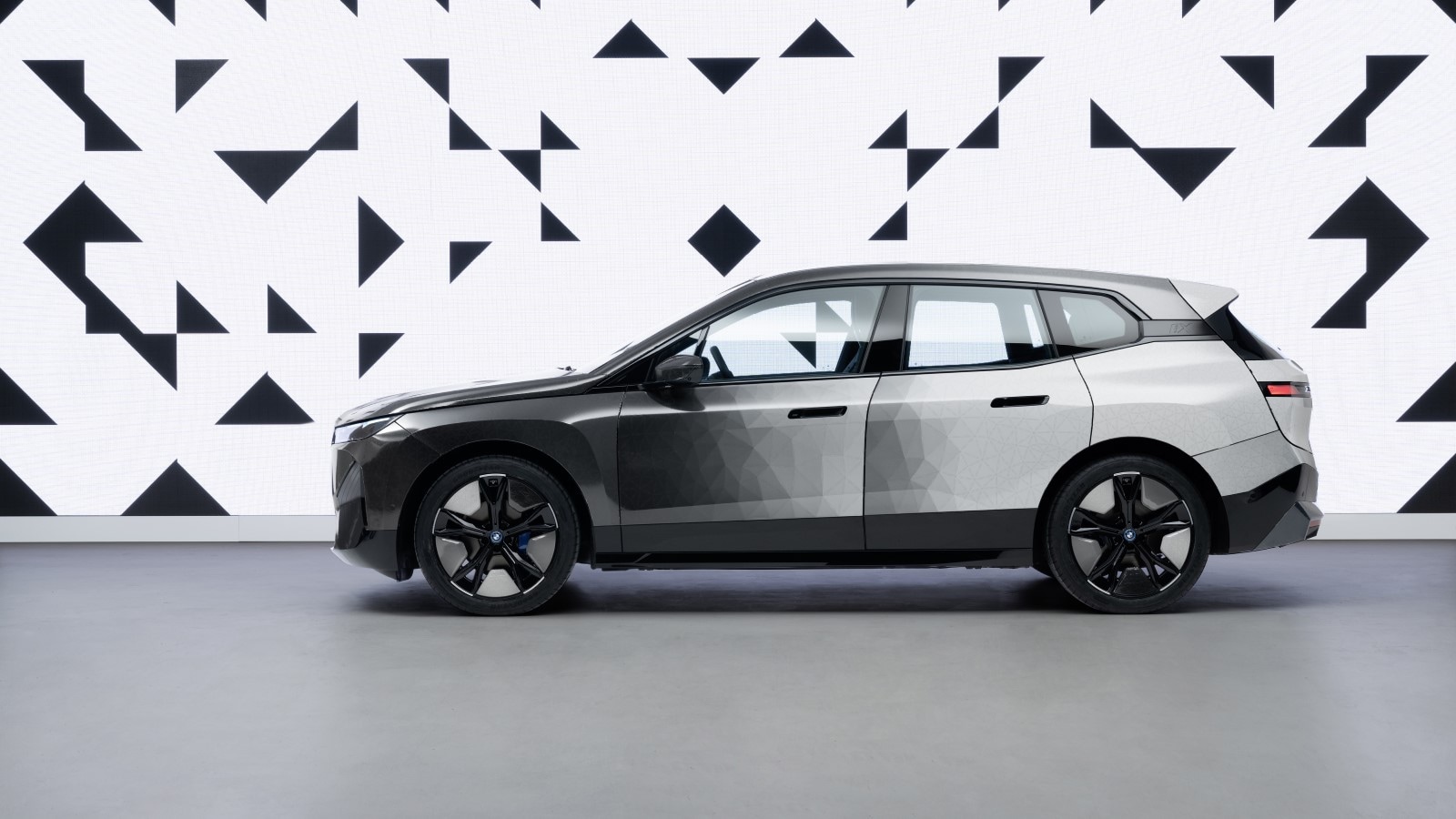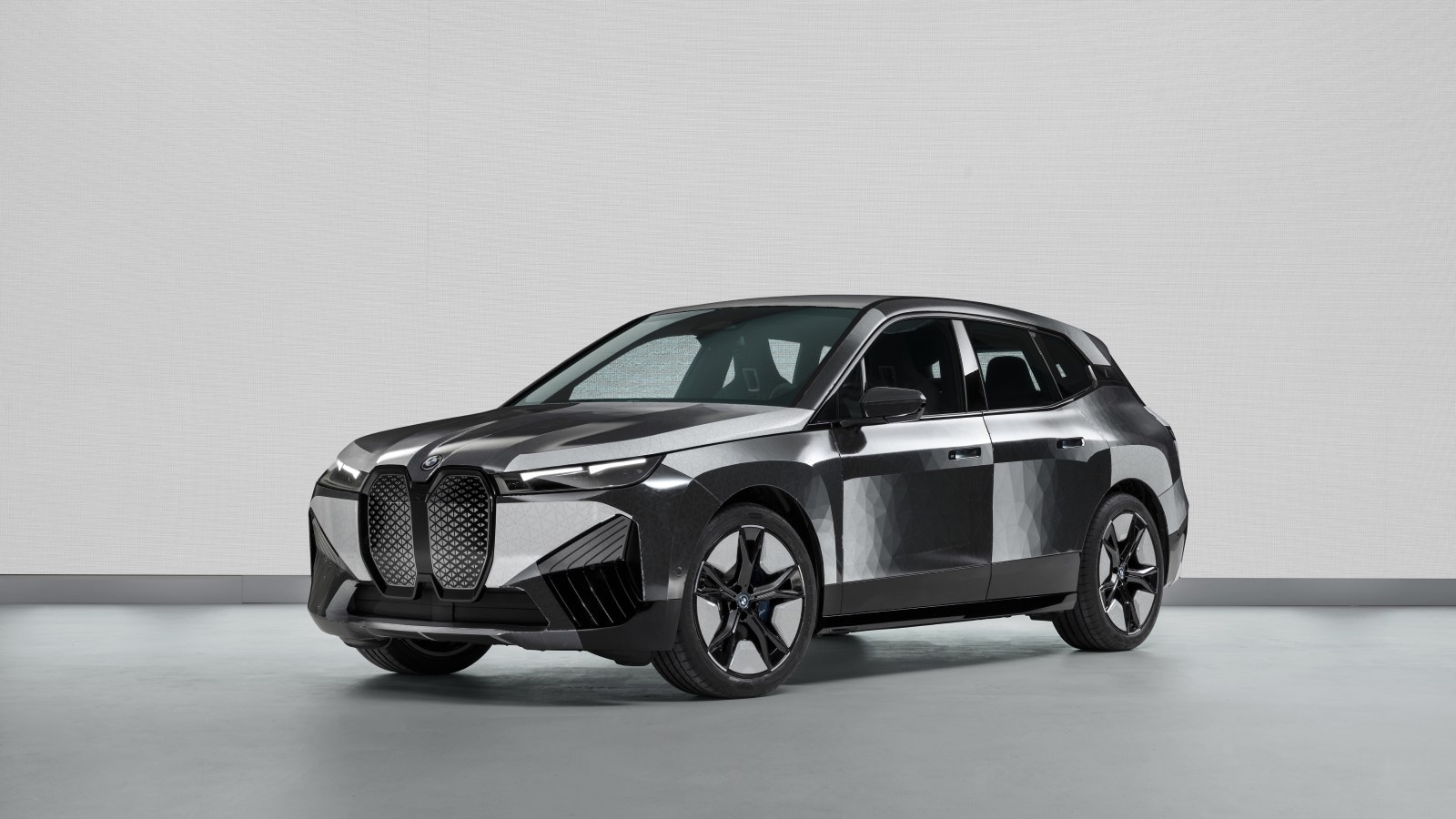Are you tired of losing your car in a parking lot full of look-alikes? Set the color to diagonal stripes intercut with random-sized circles. No one else will have that pattern today.
In 2022, BMW displayed a technology that seemed magical at the annual CES consumer electronics show: cars that changed color.
Show on an iX SUV, the technology couldn’t replicate chromatic colors (think red, blue, and every other exciting color). It could only make black, white, and every gray in between. But pixel-like units all over a car’s surface allowed artists to create almost infinite patterns.
A new report says it’s headed for production. BMW engineer Stella Clarke told The Drive the ink could appear on production cars in “three to five years.”

To be clear, Clarke didn’t confirm that BMW has plans to sell it to consumers that soon. Clarke simply believes the technology is just a few years from being cost-effective for consumer cars.
BMW’s so-called E Ink consists of millions of “microcapsules,” each with magnetically charged white and black pigments. Electrical stimulation brings the white or black to the surface. With shifting electrical currents, the paint can even create moving patterns.
Cost isn’t the only challenge BMW must solve to bring the technology to market.
“In moving traffic, you don’t want all the cars flashing around and being a deterrence, so you’d have to bring in laws that say you can change your car while it’s static, but not while it’s driving. It’s going to be very country-specific,” Clarke acknowledges.
We imagine police departments might have concerns about the technology as well.








